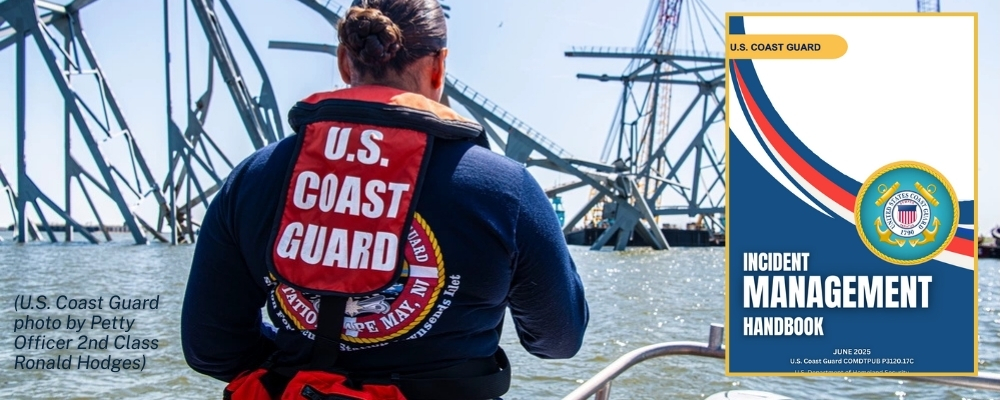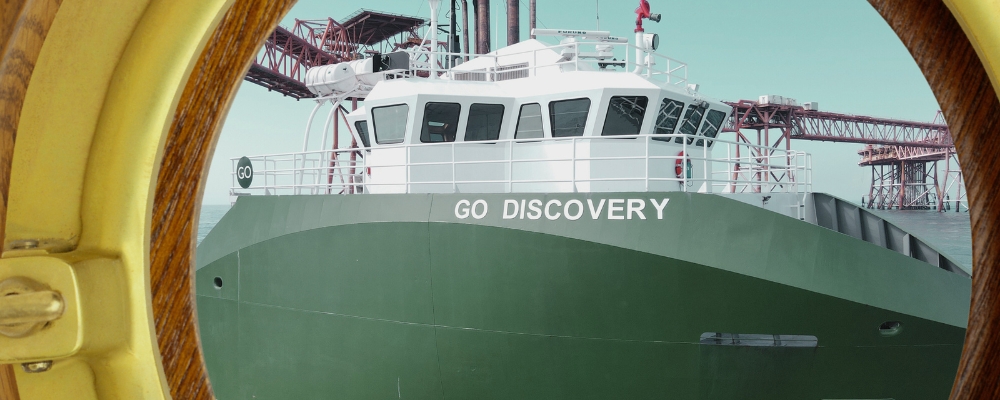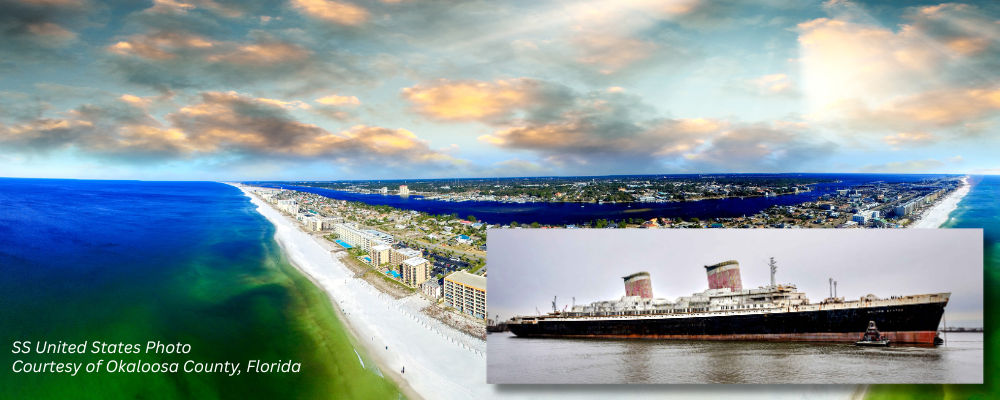The Coast Guard has recently updated its playbook for handling emergencies. The 2025 Incident Management Handbook (IMH) is the first update in over a decade, and reflects the latest best practices in national emergency response. It’s easier to use and understand, with clearer language and a better structure for quickly finding important information.
Click HERE to view and download the IMH (a printed copy will be available later in the year).
The Coast Guard Incident Management Handbook (CG-IMH) is designed to assist Coast Guard personnel in the use of the National Incident Management System (NIMS) Incident Command System (ICS) during response operations and planned events. It is not a policy document, but rather an easy-to-use reference job aid and guidance for incident response personnel.
Integrating the principles of Force Design 2028, this new handbook focuses on being flexible and adaptable, not just following a checklist. It empowers Coast Guard members and emergency managers to make informed decisions in unpredictable and challenging situations. It also stresses planning ahead and using data to predict and prevent problems.
Some key improvements include:
- Easier to use: Simplified layout and language for quick access to critical information.
- Flexible response: Guidance for handling any incident, big or small.
- Better teamwork: Improved communication and coordination with other agencies.
- Up-to-date procedures: New sections on cyber events, Unmanned Aircraft Systems (UASs), and severe weather.
- Assistance for responders: Emphasis on responder resilience for crisis operators.
Major changes applicable to CG-IMH:
a. Updates and clarifies incident management concepts arising from the 2017 revision of National Incident Management System doctrine (Reference (a)) and the 2019 revision of the National Response Framework (Reference (d)). Such concepts include an:
(1) Expanded discussion of Multiagency Coordination Systems (MACS).
(2) Introduction of Community Lifelines and their role in guiding incident response priorities.
(3) Expanded guidance of the Intelligence and Investigations function within incident management as initially outlined in Reference (e).
(4) Organizational and functional realignment of information and communications technology support operations as described in Reference (f).
b. Refines the Incident Action Planning Process and the model for the Operational Period Planning Cycle, also known as the “Planning-P.”
c. Adds a new chapter related to response operations during severe weather events and Presidentially Declared Disasters.
d. Introduction of Unmanned Aircraft Systems (UAS) support operations during an incident.
e. Adds Cyber Response as an incident-specific annex.
f. Provides renewed emphasis to the importance of Critical Incident Stress Management and responder resilience.
The safety and security of everyday life is prone to disruption from an array of threats and hazards. To help stabilize any disruptive situation, governments and other organizations conduct response operations to save lives, mitigate great property damage, and point the road to recovery.
NIMS, which was introduced in 2004, provides the nationally accepted guidelines for how personnel and resources from disparate organizations will function as a unified response force in pursuit of a shared goal.
NIMS doctrine (Reference (a)) describes common principles, processes, and terminology used by personnel from all levels of government, nongovernmental organizations, and the private sector throughout response and recovery operations.
The United States Coast Guard is frequently called upon to participate in incident management and crisis response activities. Across the full spectrum of local, regional, and national emergencies, the Coast Guard will lead or support response operations depending on the specific threat or hazard involved. For this reason, Coast Guard personnel must be fully versed in the incident management concepts defined in NIMS. Coast Guard doctrine (Reference (b)) and policy (Reference (c)) both require the use of NIMS’ principles during incident response activities.
The CG-IMH provides essential operational guidance for Coast Guard personnel participating in response activities following a disruptive event. It describes the tactics and techniques useful for incident management under NIMS guidance.
Chapters 1 through 13 serve as a ready reference for ICS terms and processes used during most response operations.
Chapter 14 addresses issues related to response activities during severe weather events and Presidentially Declared Disasters.
Chapters 15 through 22 provide operational and organizational guidance for incident responses of particular interest to the Coast Guard such as Search and Rescue, Mass Rescue Operations, Marine Transportation System Recovery, Maritime Security, and Oil Spills.
The Coast Guard will keep improving the handbook based on user feedback to make sure it remains the best tool of its kind possible.
All Coast Guard members, civilians, and emergency response partners are encouraged to read the new IMH.



